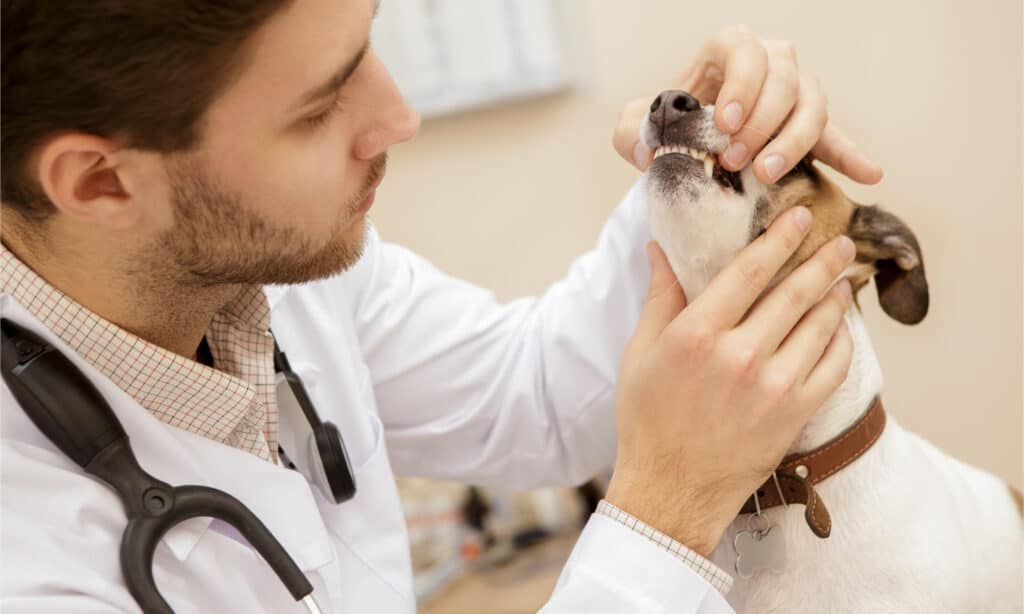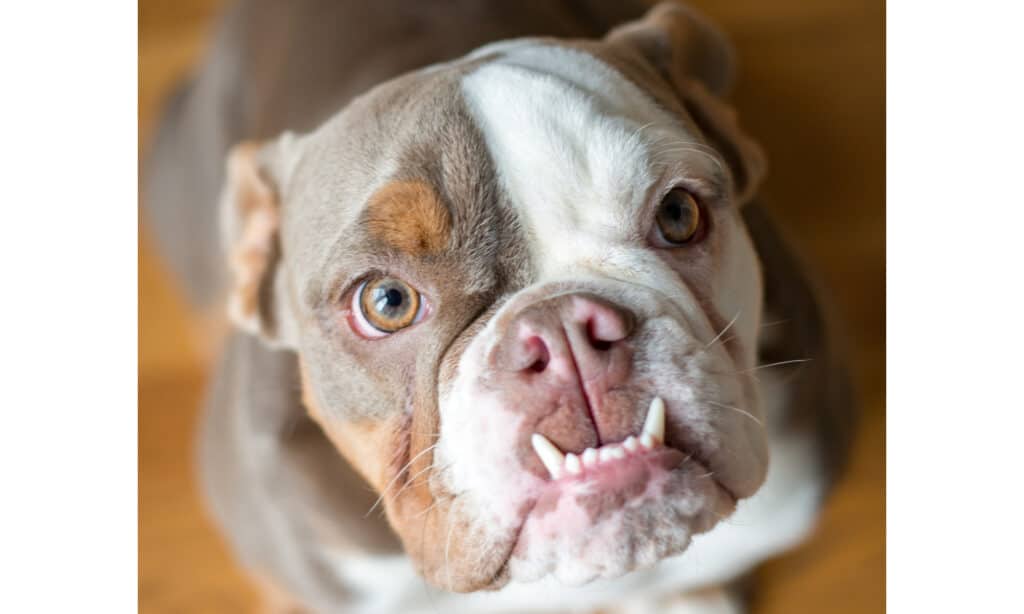We normally think about regular visits, vaccines, and the price of treatments for major diseases or accidents when we consider funding veterinary expenses for our dogs. Dental care, as it is for us humans, is a crucial element of keeping our pets healthy.
In dogs and cats, dental disease is equally as dangerous as any other ailment. Inadequate dental hygiene can result in bad breath, infections, tooth loss, and starvation if left untreated. Sadly, this frequently occurs since veterinary dental procedures are rather costly.
Many pet parents opt to put off the cost of periodic dental cleanings, allowing the disease to develop over time and necessitate more costly procedures in the future. Because certain dental procedures might cost more than $1,000, you should think about including dental coverage in your pet insurance policy.
What’s Covered Under Pet Dental Insurance?
Dental coverage is available in certain pet medical insurance policies. While coverage differs by the insurer, there are usually two types of pet dental insurance: dental incidents and dental diseases. Dental accidents and illnesses are covered by companies like Embrace Pet Insurance and Pets Best, which also give payment for dental disorders such as:
- Gingivitis
- Teeth removal
- Root canals
- Crowns
- Damaged teeth
- Stomatitis
- Gum disease
However, some pet insurance policies only cover dental accidents or diseases that arise as a result of an accident. Lemonade’s pet insurance, for instance, includes dental accidents but not oral diseases.
Check your policy to determine if there are any criteria for filing a claim with your pet dentistry insurance. For example, Pets Best only covers dental ailments if the pet is under the age of three or has undergone a dental checkup under general anesthesia in the previous 13 months that revealed no dental abnormalities.

What Isn’t Covered Under Dental Pet Coverage?
Here are some common exclusions:
- Caps, implants, and filings are examples of cosmetic, endodontic, and orthodontic procedures.
- Teeth cleaning and other routine dental care
- Pre-existing conditions in pets that happened prior to the start of coverage
What Are The Most Common Dental Issues For Pets?
Many of the most frequent dental problems in dogs and cats are listed here. Some of these may be avoided by practicing good oral hygiene, such as cleaning your teeth, using the appropriate toothpaste, and visiting your veterinarian on a regular basis.
Gum Disease
Gum disease develops when bacteria infect the tissue around the teeth, chronic irritation of the gums, tendons that hold the teeth in place, and the surrounding bone. If left untreated, dogs may experience tooth loss and underlying tissue degradation. Gum disease is the most prevalent cause of tooth loss in dogs.
A variety of variables can cause gum disease, including breed, genetics, age, and food. Gingivitis and periodontitis are the two types of gum disease.
Gingivitis
This is a condition in which inflammation happens in the gums as a result of bacterial plaque, while the ligaments and bones remain untouched. Among the signs and symptoms are:
- Gums bleed on contact
- Red or purple gums
- Bad breath
- Swollen gums
Around the age of two is when most dentists will discover gingivitis. Luckily, effective dental cleaning can help you reverse gingivitis. It can, however, progress to periodontitis if left untreated.
Periodontitis
Gingivitis is milder than periodontitis, which causes cell damage to the gums, tissues, and bone. It usually appears after years of buildup, tartar, and gingivitis have accumulated. Consequently, it is incurable and results in irreversible tooth loss.
Smaller breeds are more prone to this than bigger dogs. Dogs who eat hard kibble have fewer problems since the kibble helps to clean their teeth as they eat. Periodontitis affects the back teeth and upper teeth more than the front teeth and lower teeth.
Between the ages of four and six is when dentists find periodontitis in animals. Professional cleaning is used to treat it, and x-rays of the jaws are frequently used to check bone support. Extraction techniques are routine, and your veterinarian may advise you to take special care of your pet’s teeth at home, such as:
- Plaque prevention gel
- Daily tooth brushing
- Oral rinses
- Dental chews
- Diet changes
Pulpitis
When the tooth’s living tissue, known as the pulp, is destroyed or infected, endodontic disease, also known as pulpitis, develops. An accident, breakage, enamel irregularity, or tooth decay are the most common causes.
Fractures are a frequent cause of pulpitis in canines, and they can be caused by external trauma such as violent play or a vehicle accident, as well as biting bones, antlers, tough nylon toys, stones, railings, and other objects.
Endodontic Disease
Reversible and irreversible endodontic disease are the two forms of endodontic disease. When the dental pulp is harmed but can recover, it is called reversible pulpitis. Irreversible pulpitis occurs when the pulp is dead and requires treatment with a root canal or extraction. Among the signs and symptoms are:
- Teeth with gray, purple, or reddish-brown hues
- Decreased appetite
- Black or red hole on the surface of a crown
- Facial swelling
- Painful teeth that are sensitive to your pup
- Visible fractures
Dogs are excellent at disguising their suffering, making diagnosis challenging. Veterinarians can take x-rays to help detect any teeth that are impacted. Root canal therapy or tooth extraction are two options for treatment.
Some of the breeds most likely to experience these issues are Yorkies, Dachshunds, Poodles, Labrador Retrievers, Chihuahuas, and German Shepherds.
Developmental Abnormalities
There are a handful of developmental abnormalities that some dogs face. Here is a handful of the most common for you to be aware of as a pet owner.
Unerupted Teeth
Teeth that stay below the gumline are more common in smaller breeds (unerupted teeth). Teeth can be unerupted in dogs with shorter and flatter skulls (often known as brachycephalic breeds).
X-rays can aid in the diagnosis of unerupted teeth and the detection of cysts. Cysts are harmful because they have the potential to ruin the jaw. To avoid additional harm to the mouth, it’s critical to extract unerupted teeth.
Underbites in Small Breeds
These are frequently inherited genetically. It may require treatment if developmental problems compromise your dog’s comfort, health, or function. If it’s only an esthetic problem, though, it’s fine to ignore it.
Improper Bites
Complications might emerge if the mouth and teeth do not grow and develop in the appropriate order. Several complications might arise, including:
- Underbite – found in French Bulldogs, Pugs, Shih Tzus, and Boston terriers
- Extra teeth
- Tilting of teeth – found in Bulldogs, Maltese, Pugs, Boston Terriers, and Lhasa apsos
- Delay in losing baby teeth
- Crowding – found in Pugs, Boston Terriers, Shih Tzus, Bulldogs, and Maltese
- Overbite – found in Shelties, Dachshunds, and Collies
- Rotating teeth
- Incorrect positioning

Enamel Defects
Fevers and chemical deposits inside the tooth can cause long-term harm to both puppy and adult teeth as they mature. The canine distemper virus generates a fever by attacking the enamel-producing cells in the teeth. Enamel deteriorates and becomes thinner as a result of this. Other disorders that induce fevers can also cause enamel to form improperly.
Enamel abnormalities can occur in young pups that are very malnourished. Single-tooth enamel abnormalities are almost always the result of trauma or illness. Frayed baby teeth can harm the enamel of the permanent teeth when they emerge, which is a common cause of infection. Because enamel abnormalities can go from one generation to another, some breeds are prone to them.
Jaw and Face Trauma
Falling, forceful chewing, fights with other pets, traffic accidents, and other types of trauma are all possible. Periodontitis or malignancy can cause jaw fractures. Your veterinarian may suggest a specific therapy according to the degree of the injuries.
Crown installation, root canal therapy, and wound management are all options. Various operations might result in a wide range of prices, and oral therapy can cause trouble eating, necessitating the use of a temporary feeding tube while the wound heals.
Pet Dental Treatment Costs
If the operation is complicated, dental procedures for pets can quickly cost quite a bit of money. When addressing dog or cat dental issues, anesthesia is nearly always a must, which contributes a couple of hundred dollars to your medical cost.
X-rays costs are another common item to have in your wallet. This treatment should be expected, particularly if your pet has been through a stressful occurrence. When you include the cost of the anesthesia, even routine dental cleanings can cost anywhere from $500 to $1,000.
Plaque and tartar eradication is comparable to dental cleaning, however, gingivitis treatment can be more expensive, costing up to $1,400. Periodontitis treatment costs roughly the same as gingivitis treatment, but because it takes more time to recover, you’d have to go to the vet many times. You can call your vet to figure out how much these appointments will cost, as they may involve tooth extractions and root canal procedures.
As a result, if you ignore your cat early on and wait for their health to develop, you might be looking at a dentist’s medical bill of several thousand dollars. That’s if procedures go as planned and there are no side effects. This is why it can be a lifesaver to have dental insurance for your furry friend.
What to Look For When Getting Pet Dental Insurance
Choosing the greatest pet dentistry insurance may be a time-consuming task, but we’re here to help you each step along the way. Nevertheless, only you can determine what is ideal for your pet and which choice is most cost-effective for you.
With that in mind, here’s what you should look for when evaluating a pet insurance provider:
- Examine anything the firm covers and everything that isn’t, so you know exactly what you’re getting into.
- Take heed of the company’s pre-existing condition policy; it often doesn’t include specific ailments
- Pay attention to the company’s average claim repayment rate; this is a good indicator of how reliable a health insurer is.
- Look to see if your favorite dentist provides a wellness plan to assist you with your regular dental exams and operations.
- Checking the AM Best, BBB rating, and internet customer reviews should also provide you with ample information about a company’s trustworthiness.
- Try and get a couple of different quotations from the companies you’ve picked. This way, you’ll know precisely how much your customized coverage will cost.
- Finally, check into low-cost options like Pet Assure, which may assist you if any pre-existing problems emerge and require treatment.
Bottom Line
One possible advantage of pet insurance is dental coverage. However, you cannot purchase insurance only to cover your pet’s dental. Instead, think about if the insurance’s entire advantages add up to a pet necessity that’s worth the money.
If you choose to purchase insurance, look into the various carriers’ dental coverage options. The scope of this coverage varies, and the variances may influence your decision. Additionally, because most pet insurance plans do not cover preventative services like teeth cleaning and dental examinations, you may want to try and add a wellness plan to your coverage, which will cover both dental and non-dental expenditures.
Lastly, dental problems, and the necessity for pet insurance coverage to cover treatment, may be avoided with a little planning. Frequent brushing or cleaning of your pet’s teeth, as well as annual cleanings, are recommended by veterinarians to avoid oral surgery for problems including gingivitis and the necessity for tooth extractions.
Thank you for reading! Have some feedback for us? Contact the AZ Animals editorial team.




